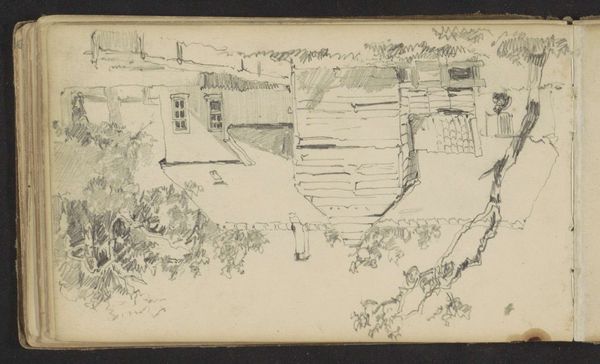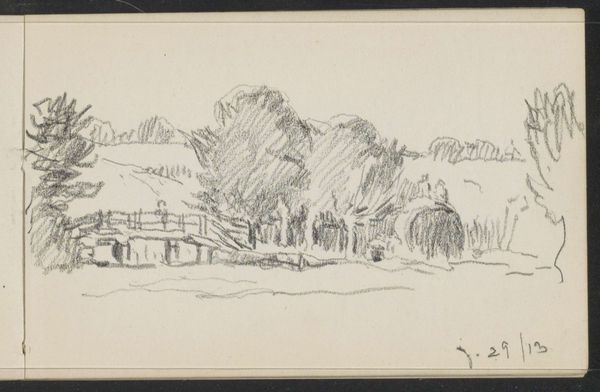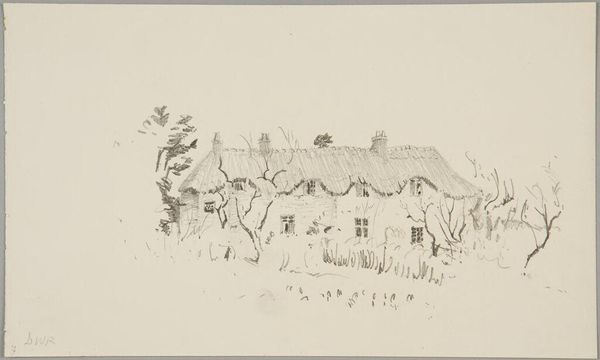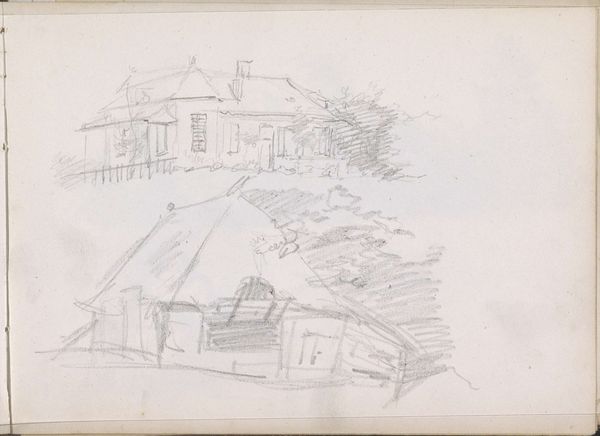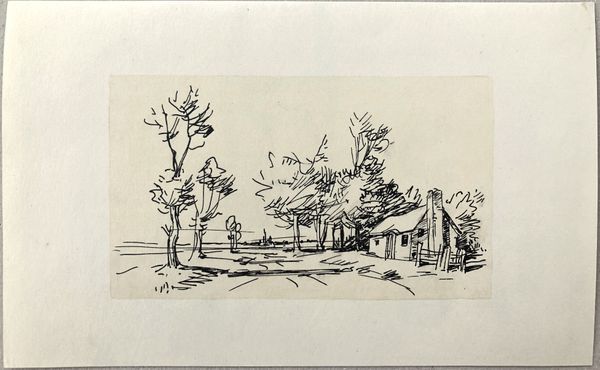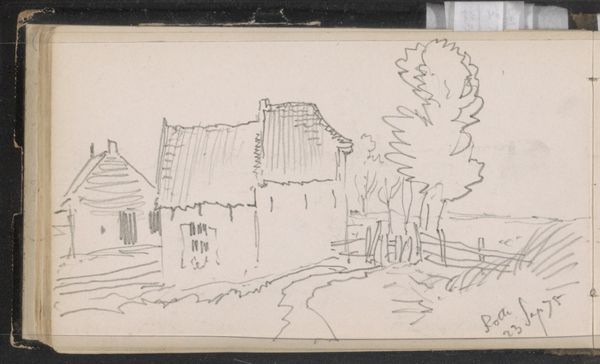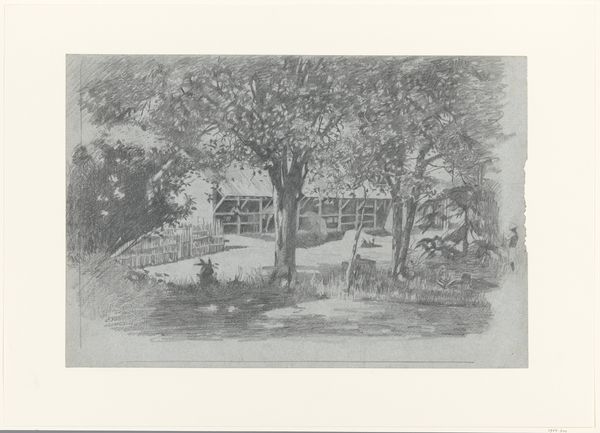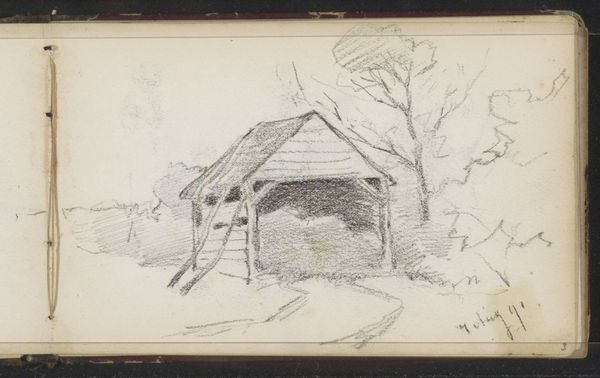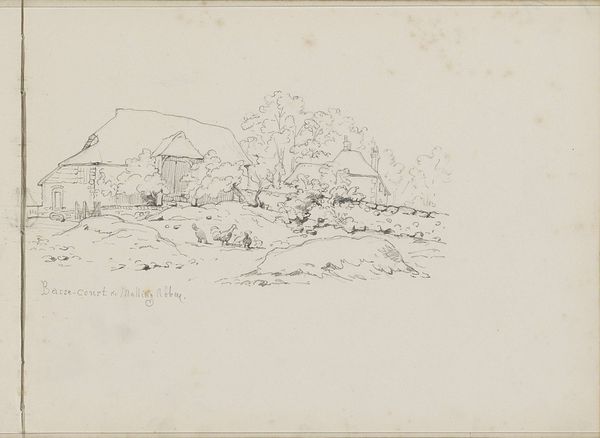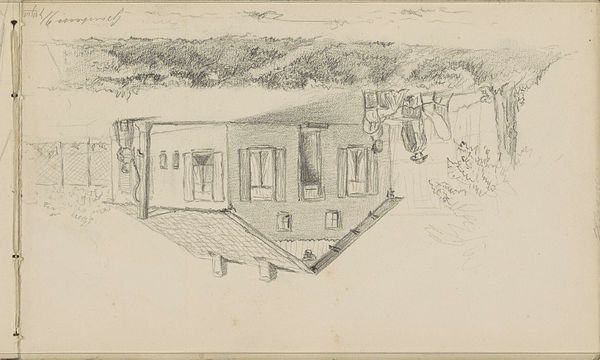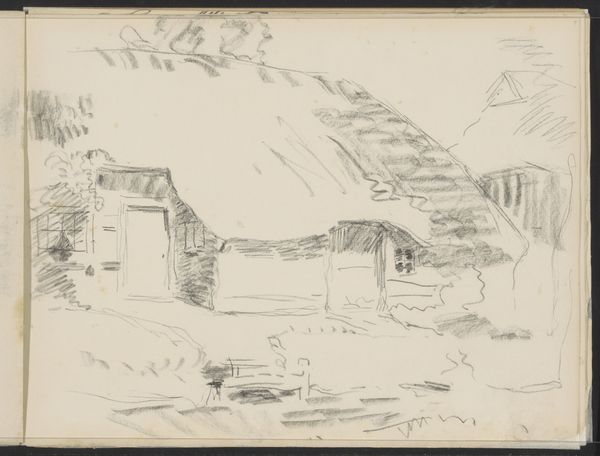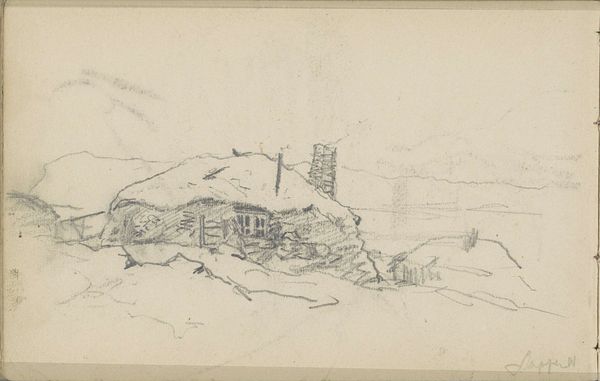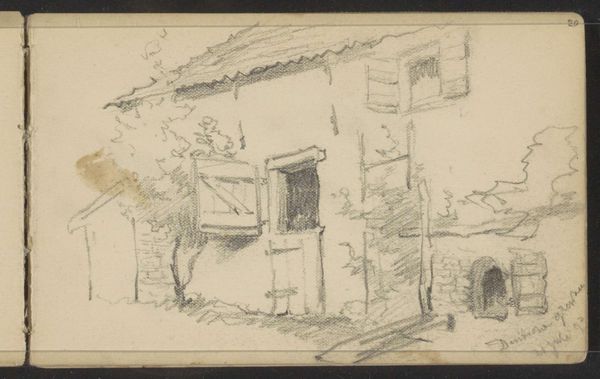
drawing, pencil
#
drawing
#
impressionism
#
pen sketch
#
sketch book
#
landscape
#
personal sketchbook
#
sketchwork
#
ink drawing experimentation
#
pen-ink sketch
#
pencil
#
pen work
#
sketchbook drawing
#
storyboard and sketchbook work
#
sketchbook art
Dimensions: overall: 12.9 x 17.9 cm (5 1/16 x 7 1/16 in.)
Copyright: National Gallery of Art: CC0 1.0
Editor: Here we have John Marin’s “House in Woods,” likely sketched between 1890 and 1891, a work rendered in pencil. There’s something so immediate and intimate about seeing an artist's sketchbook work. What kind of narrative do you see unfolding in this seemingly simple scene? Curator: I'm struck by the interplay between shelter and wilderness. The house itself is a classic symbol of domesticity, safety, and the self. But it's almost engulfed by the trees, which are rendered with these frantic, energetic lines. The home, that personal sanctuary, is nearly overwhelmed by the outside world, nature itself. What does that tension communicate to you? Editor: It feels a bit vulnerable. Like the safety isn’t absolute. Does the style of the sketch – the quick lines – add to that feeling? Curator: Absolutely. Think of those horizontal lines representing the roof. They remind me of primitive signs for rain, shelter as a symbolic response to a looming element. Then consider the fence – a common signifier of boundaries, control – yet so flimsy in its penciled fragility! It barely holds back the suggestion of the untamed. Do you see a visual parallel between how the trees are sketched, and how the roof or fence are treated? Editor: Now that you mention it, yes. All the marks are so light, so fleeting. Nothing feels really fixed or permanent. The organic and man-made almost blend together, there’s an equivalence, somehow… Curator: Exactly. That lack of firm definition speaks volumes. Perhaps about our relationship with nature at that moment, the feeling of being safe, but in constant dialogue with an external world. This era began a dialogue shift; with one foot in Romanticism and another exploring industrialized themes. A moment captured between progress, or being grounded within something permanent. Editor: That makes so much sense. I’d just seen it as a quick sketch before, but now I see layers of meaning. Curator: It’s often in these fleeting sketches, these supposed "in-between" moments, that artists reveal their deepest preoccupations, their visual negotiations of self and world.
Comments
No comments
Be the first to comment and join the conversation on the ultimate creative platform.
